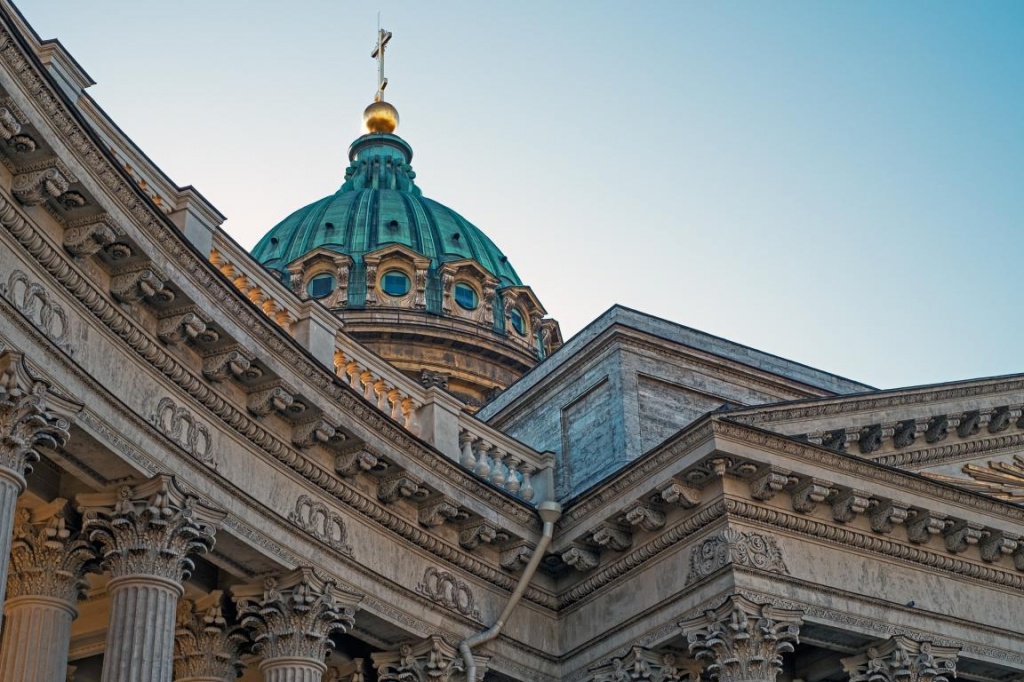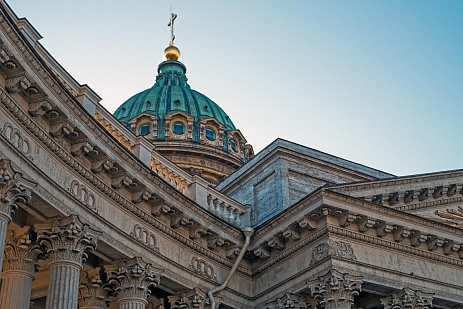Kazan Cathedral

Kazan Cathedral is one of the largest cathedrals in Saint Petersburg. It was built in 1801-1811 by the architect Andrey Voronikhin by order of Emperor Paul I who wanted the cathedral to resemble St. Peter's Basilica in Vatican City. The cathedral is the monument to glory of Russian arms. The famous Russian Field Marshal Mikhail Kutuzov who won the most important campaign of 1812 was buried inside the Kazan Cathedral. The sacred thing of the cathedral is a copy of an icon of Our Lady of Kazan.
Kazan Cathedral is remarkable for its plan. Half-round colonnade decorates the side façade of the cathedral but not the main one. According to church canons the altar was to face eastwards and the main entrance westwards.
St. Isaac's Cathedral

Saint Isaac's Cathedral in Saint Petersburg is the largest orthodox church and the fourth largest cathedral in the world. It is dedicated to Saint Isaac of Dalmatia, a patron saint of Peter the Great.
The church on St Isaac's Square was ordered by Tsar Alexander I to replace an earlier Rinaldiesque structure and was the fourth consecutive church standing at this place.
The neoclassical exterior expresses the traditional Russian-Byzantine formula of a Greek-cross ground plan with a large central dome and four subsidiary domes. The exterior is decorated with gray and pink stone and features a total of 112 red granite columns with Corinthian capitals.
The cathedral's main dome rises 101.5 meters and is plated with pure gold. The dome is decorated with twelve statues of angels by Josef Hermann. Montferrand's design of the dome is based on a supporting cast iron structure.
Church of the Resurrection of Jesus Christ

The Church of the Resurrection of Christ, also called The Saviour on the Spilled Blood, that was built by Emperor Alexander III as a memorial to his assassinated father, Emperor Alexander II. The décor of the church, both inside and outside, is a symphony of colors that delight the eye and done all in mosaics and tiles. The domes are covered by gilt and enameled sheets of brass. Gilded brass is used extensively on the exterior, with gilt on the domes and zinc and brass on the porches, cornices, and pediments. An interplay of granite and brick with mosaics are present over whole exterior. The interior is an explosion of mosaics. The media of mosaics is used in all the icons with a floor of fine marble. Today visitors are allowed to walk only in designated aisles.
There are no paintings in the interior of the church, only mosaics. Most of the tessera work was done by the workshop of A. and V. Frolov. The mosaics were designed by a corps of Russia’s best artists of the time.

